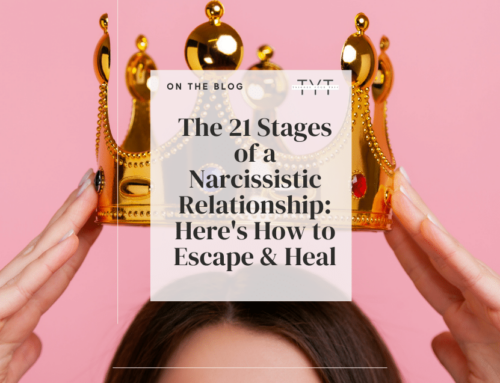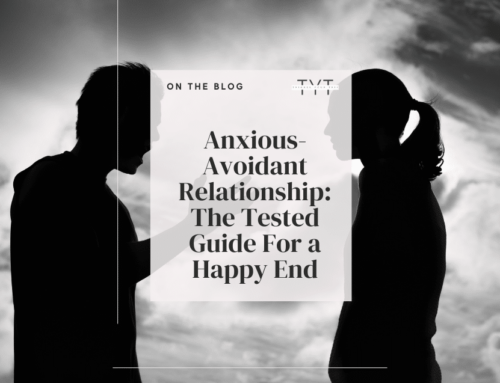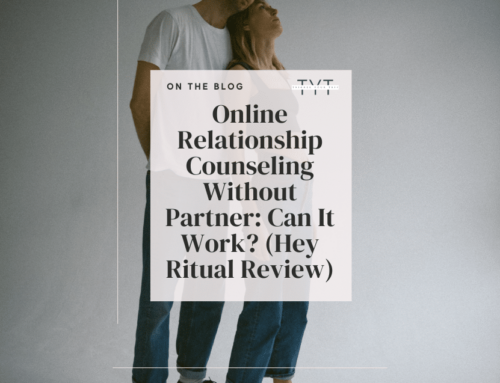The fear of abandonment can significantly affect your relationships and well-being, as there is always a paralyzing terror of ending up alone and forgotten. Most likely, your fear prevents you from fully experiencing the love you crave, a self-fulfilling prophecy that hurts you even more. You need patience, willingness, and self-compassion to understand and deal with your fear of neglect. This guide aims to show how to deal with abandonment issues, providing practical steps to recognize and heal from them without judgment.
I want you to know that you are worthy of a healthy, safe relationship. Ready to take practical steps towards that?
What Are The 5 Stages of Abandonment?
Abandonment can be a deeply distressing experience, unfolding in various stages. Here are five stages often associated with the experience of abandonment:
- Shock and denial
- Anger and pain
- Bargaining and seeking reconciliation
- Depression and despair
- Acceptance and healing
Do they ring a bell?
Read More: Emotional Permanence Explained & 5 Top Tips on How to Cope
Understanding the Five Stages of Abandonment
To navigate the complex emotional terrain of abandonment fears, it’s crucial to understand its distinct stages. These stages can help individuals identify their mental health conditions and learn how to cope effectively. Each stage represents a different aspect of the healing process, providing growth opportunities regardless of where it is generally rooted.
In the following sections, we will delve into these five abandonment stages.
Shock and Denial:
The initial stage of abandonment is often characterized by shock and denial. This phase is usually marked by feelings of disbelief and numbness, as the reality of the situation may seem overwhelmingly difficult to accept. Individuals may find themselves in a state of denial, refusing to acknowledge the abandonment or its implications.
Understanding that these responses are natural defense mechanisms our brain implements to protect us from immediate emotional distress or overwhelming pain is essential. It’s crucial to allow yourself to experience these feelings without judgment and seek the support of trusted individuals or professionals who can provide comfort and guidance.
Anger and Pain:
Intense feelings of anger and pain characterize the second stage of abandonment. The denial begins to fade, and the reality of the abandonment becomes difficult to ignore. This can lead to feelings of anger, often directed towards the individual who caused the abandonment, oneself, or the situation as a whole.
Alongside anger, sadness, guilt, or self-blame may emerge, stemming from the stark realization of loss.
These emotions, while uncomfortable, are a critical part of the healing process. Acknowledging these emotions, rather than suppressing them, is essential for processing the abandonment fear. It may be beneficial to express them in a safe way. This includes journaling, art, or talking with a friend or mental health professional.
Read More: The Best 25 Journal Prompts For Mental Health to Break Trauma
Bargaining and Seeking Reconciliation:
In this phase, individuals often find themselves attempting to negotiate or bargain emotional intimacy in an attempt to undo or diminish their separation anxiety alongside their fear of abandonment.
Individuals might fixate or fantasize about ways the situation can be reversed. It is also common to obsessively ruminate on what could have been done differently to prevent abandonment.
It’s pivotal to understand that it’s natural to want to correct or resolve the situation, but it’s crucial to face reality. Seeking professional help can provide the necessary tools and perspectives to constructively navigate this stage and the abandonment fear.
Nourishing self-compassion and understanding that it’s okay to have these feelings can be instrumental in moving forward.
Depression and Despair:
The next stage of abandonment is an overwhelming sense of depression and despair, often considered a mental health condition. As the reality of the abandonment sinks in, feelings of sadness and loss can feel far more profound.
The separation anxiety leads to a sense of hopelessness, depression, and a heightened anxious attachment style. It’s common for individuals to feel isolated during this stage as they grapple with feelings of unworthiness or fear that they may be abandoned again in the future.
Remember that this stage is not permanent; it is a phase of grief and healing. Seeking support from friends, family, or a mental health professional can be immensely helpful during this time.
Self-care and mental health care are extremely important as they can help manage depressive symptoms while working through these feelings.
Read More: Free Borderline Personality Disorder (BPD) Test & How to Spot High-Functioning BPD
Acceptance and Healing:
The final stage of abandonment involves acceptance and healing. This stage represents a significant turning point in the journey, where individuals begin to accept the reality of what has happened.
Acceptance doesn’t mean forgetting or minimizing the pain of the abandonment but rather acknowledging it as a part of one’s life story. It involves letting go of the resentment or anger held against the person who caused it or towards oneself.
During this stage, there’s a shift from survival mode to a space of growth and healing. Individuals start to rebuild their self-esteem, gaining a deeper understanding of their worth that is independent of the abandonment.
They may also begin to form healthier relationships, set boundaries, and understand their needs better.
Read More: The 45 Top Manifestation Affirmations to Attract Abundance
What is the Main Cause of Abandonment Issues?
Fear of abandonment primarily stems from experiences in an individual’s past where they felt deserted or forsaken. These experiences could have taken place in childhood or early adulthood.
Childhood Experiences:
Childhood is a critical period in a person’s life when the foundation of their emotional and mental health is established by forming an attachment style.
During early childhood, consistent care, love, and support from caregivers are crucial. If a child receives emotional neglect consistently or experiences a traumatic event such as the death of a family member, divorce, childhood abuse, adoption, or childhood sexual abuse, they may develop mental health conditions where abandonment issues are present. According to the attachment theory, their fear of abandonment is frequently linked to the three insecure attachment styles: anxious, avoidant, and disorganized attachment style.
Especially the disorganized and anxious attachment style might make the child internalize the belief that they are not worthy of love or care, leading to feelings of insecurity and fear of abandonment in their future relationships.
Childhood trauma plays a huge role in the fear of abandonment, so catering the child’s physical and emotional needs is essential.
Early Adult Experiences:
Adult experiences like a sudden traumatic breakup, abusive relationships, controlling behaviors, betrayal, or the death of a loved one can also lead to abandonment issues. These experiences can trigger intense fear of abandonment or attachment anxiety, especially when their emotional needs are neglected. This leads the person to develop an unhealthy relationship, coping mechanisms, or behaviors in an attempt to avoid abandonment.
It’s important to note that not everyone who experiences abandonment will develop abandonment issues. Several factors, including the individual’s resilience, the presence of a supportive network, and their ability to process and cope with the traumatic event, play a significant role in determining whether abandonment issues will develop or not.
Read More: Why Do I Get Attached So Easily? The Main Reasons & 7 Tips
What Are The Signs of Abandonment Issues?
Abandonment issues stem from various signs and symptoms, influencing an individual’s behavior, thoughts, and emotional patterns. Recognizing these signs is the first step toward understanding and addressing the root of these fears. Let’s delve into the common signs of abandonment issues.
Fear of Rejection
People with abandonment issues often harbor an intense fear of rejection. This fear typically manifests as anxiety or distress at the prospect of being dismissed, unwanted, or replaced. Such individuals may be hyper-vigilant to signs of rejection in their relationships, interpreting even minor disagreements or conflicts as evidence of impending abandonment.
The abandonment effects of that fear can lead to various behaviors, such as constantly seeking reassurance, a deep yearning for validation, avoiding relationships altogether (which is commonly seen in people with avoidant attachments), or clinging excessively to partners or friends.
In severe cases, the fear of abandonment and neglect can become so crippling that it hinders the individual’s ability to form meaningful and healthy relationships, and it’s generally a common scenario for people with insecure attachment styles.
Read More: The Most Common Anxious Attachment Triggers & How To Handle Them
Difficulty Trusting Others
Individuals experiencing abandonment issues often have difficulty trusting others. This lack of trust is rooted in the fear that those they trust will eventually leave or betray them, just as it happened in their past. Consequently, these individuals are skeptical of others’ intentions and find it challenging to believe reassurances or promises.
This distrust can extend to professional and romantic unhealthy relationships, creating barriers to intimacy and connection. The fear of trust may also lead to constant suspicion or fear of deceit, even in the absence of any substantial cause or evidence.
Need for Constant Reassurance
Individuals with abandonment anxiety often need constant reassurance, frequently seeking validation and affirmation from others to alleviate their insecurities and ensure safety in their relationships.
This need for reassurance, which is commonly seen in behaviors from people with insecure attachment styles, can manifest in various ways, such as frequently needing communication or seeking excessive affirmation of their worth.
Such behavior is not merely a desire for attention but rather a coping mechanism caused by attachment wounds and deep-seated abandonment fear.
Fear of Intimacy or Avoidance of Close Relationships
Abandonment issues tend to cause a fear of intimacy or avoidance of close and romantic relationships, which is commonly seen in individuals with avoidant attachment styles. Their insecure attachment often makes developing deep emotional connections with others challenging, fearing that forming such bonds will inevitably lead to abandonment.
People who fear abandonment may avoid intimate relationships altogether or maintain emotional distance even within relationships as a defense mechanism. This avoidance is not due to a lack of desire for closeness; rather, it stems from the fear that getting too close to someone gives that person the power to leave or hurt them.
Read More: How Hyper-Independence Can Signify Trauma (& 5 Ways To Cope)
Jealousy and Possessiveness
Individuals dealing with past trauma or an unhealthy relationship often exhibit intense jealousy and possessiveness towards their partners or friends, driven by the fear of losing them. The thought of their loved ones spending time with others can result in feelings of insecurity and fear, leading them to act possessively.
This constant worry about their partner’s loyalty can result in them making unreasonable demands, being overly controlling, or exhibiting manipulative behaviors to prevent perceived abandonment.
Self-sabotage in Relationships
People with abandonment issues may sometimes engage in self-sabotaging behaviors, which are caused by an insecure attachment style. These individuals often harbor a fear of abandonment so intense that they unconsciously undermine their relationships, effectively causing the abandonment they fear.
They may push their partners away, act out, or create unnecessary conflict, all in an attempt to test their partner’s patience and commitment. However, these actions can instead lead to sabotaging relationships and prevent a healthy relationship from existing.
This self-sabotage serves as a protective mechanism – by causing the relationship to end prematurely, the individual can exercise some semblance of control over their fear.
Yet, it is a maladaptive strategy, as it sabotages potentially healthy and fulfilling relationships and reinforces their belief and fear of abandonment.
Read More: Fearful Avoidant Attachment: 7 Signs of Craving & Fearing Love
Do Abandonment Issues Go Away?
Abandonment issues can be deeply ingrained and challenging to overcome, but treating them is possible.
However, they do not simply disappear of their own accord. With the right emotional support, understanding, and professional help, individuals can work through these issues, improve their mental health, and thus create healthy relationships.
Do you have difficulty choosing a mental health professional? Can’t afford in-person couples or individual therapy?
This online therapy toolbox is more efficient and affordable than any other virtual therapy I’ve tried, including BetterHelp and Talkspace. It instantly matches you with a therapist and saves you hours of research for the right one (with unlimited daily messaging and support from your therapist). By leveraging the power of CBT (Cognitive Behavioral Therapy) -the most common psychotherapeutic approach for treating mental health problems- your therapist will guide you to a happier self through weekly sections, CBT worksheets, unlimited messaging, and daily worksheet replies. Bonus price for the fact that you can do your sessions wherever you are in the world and message your therapist anytime, daily.
The Ultimate Guide on How to Deal With Abandonment Issues
Mindfulness Meditation:
Mindfulness meditation can be a powerful tool to cope with abandonment issues. It helps individuals become more aware of their thoughts and feelings without getting caught up in them.
By practicing mindfulness, people can learn to observe their fears of abandonment and rejection without reacting to them impulsively. The process involves sitting comfortably, focusing on the breath, and then bringing the mind’s attention to the present without drifting into concerns about the past or future.
Moreover, mindfulness meditation promotes self-compassion, which can benefit individuals dealing with abandonment issues. It encourages acceptance and kindness towards oneself, reducing the harsh self-criticism often accompanying feelings of abandonment. Mindfulness helps us stay present and detached from distressing thoughts and emotions, allowing us to respond in a healthier way.
Read More: Manifestation Meditation: A Top Guide For Attracting Through Balance
Attachment-Based Therapy:
Attachment-based therapy focuses on strengthening or developing secure attachment styles and interpersonal relationships. The therapist aims to provide a secure, supportive environment where individuals can explore fear of abandonment.
The goal is to identify patterns of thoughts and behaviors that stem from past experiences of abandonment and work towards replacing an insecure attachment style with a secure one.
It strives to replace feelings of insecurity and fear with a sense of security and positivity.
Ultimately, attachment-based therapy provides a pathway to heal abandonment wounds, fostering the development of trust and intimacy in current and future relationships. It is also known to help with personality disorders and unmet emotional needs. Over time and with the proper therapist, you will no longer fear abandonment.
Read More: Therapy for Narcissistic Abuse: The 5 Best Affordable Alternatives
Emotion Regulation Techniques:
Emotion regulation techniques are important strategies for managing and coping with intense emotions related to abandonment issues. One common approach is the Dialectical Behavior Therapy (DBT) technique, which includes skills like mindfulness, distress tolerance, emotion regulation, and interpersonal effectiveness.
These skills can help individuals recognize, experience, and accept their emotions and unhealthy relationships instead of trying to escape from or deny them. These self-soothing techniques will ultimately help you overcome abandonment issues.
Self-Compassion Practice:
Practicing self-compassion is crucial in developing secure attachment and moving on from traumatic events.
This practice involves understanding and forgiving oneself by encouraging individuals to be kind and patient with themselves, especially when they’re struggling with feelings of abandonment. It provides room for acceptance- recognizing one’s feelings and experiences without judging them or oneself.
Strengthen Social Support:
Strengthening one’s social support network is vital to overcoming abandonment issues. Establishing healthy relationships with friends, family, or support groups can provide an environment of understanding and acceptance. In this supportive environment, individuals can openly share their experiences and feelings, reducing feelings of isolation or loneliness.
A strong social network can help provide reassurance and positive feedback, fostering self-esteem and a sense of belonging. It’s important to remember that overcoming an insecure attachment style and curating nurturing relationships takes time and effort, but the rewards are immense.
Cognitive Behavioral Therapy (CBT):
Cognitive Behavioral Therapy (CBT) has shown to be very effective in dealing with abandonment anxiety and certain mental health conditions such as obsessive-compulsive disorder and borderline personality disorder. This mode of therapy focuses on identifying and altering maladaptive thought patterns, ensuing emotions, and behaviors.
It aims to challenge abandonment fears, replacing them with healthier and more adaptive thoughts. For instance, the fear of abandonment is replaced with the understanding that isolation isn’t a result of one’s inadequacy but rather a consequence of particular circumstances.
CBT also involves learning and practicing new skills and strategies for managing anxiety and stress related to abandonment fears.
Trauma-Informed Care:
Trauma-informed care is an approach that emphasizes physical, psychological, and emotional safety for those who have experienced trauma such as childhood abandonment, suffer from personality disorders like borderline personality disorder, or have experienced intimate partner violence such as sexual abuse.
When applied to abandonment issues, it involves understanding and recognizing the signs and symptoms of trauma in clients, families, staff, and others involved with the system. It aims to resist re-traumatization actively and promotes healing and resilience. In the context of abandonment, this involves understanding how the trauma of being left or discarded may impact one’s behavior, emotions, and relationships.
It empowers individuals by giving them the skills to understand their trauma responses and actively engage in their recovery process. This approach can be particularly beneficial for those with chronic feelings of abandonment, as it encourages a deeper understanding of their experiences and provides a safe, supportive environment for recovery.
Read More: The 7 Stages of Trauma Bonding; Here’s Why You Can’t Leave
Final Thoughts on Abandonment Anxiety
Dealing with abandonment anxiety can be challenging, but it’s important to remember that you’re not alone. A plethora of effective therapeutic techniques and self-help strategies are available.
While it may take time and patience, overcoming abandonment issues is achievable, leading to healthier relationships and a heightened sense of self-worth.






